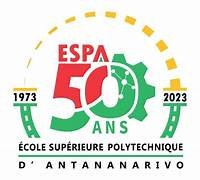Analysis of FDI: impacts on total factor productivity in Madagascar
Résumé
This article is aiming at bringing its contribution to current debates on Madagascar's strategy for enhancing its industrial productivity. Indeed, generally speaking, productivity, meaning getting more production while using a minimum input quantity in terms of raw materials, energy and time, is one of the best ways in making industry reconcile with environmental integrity. Its main objective is to closely look at the impacts of FDI on the national economy’s total factor productivity (TFP) during the time spanning from 1988 to 2020. The chosen methodology consists in estimating, first, the TFP using a relationship stemming from the Cobb-Douglas model, and, then, the long-term equilibrium relation with the VECM method. The result shows that from 1988 to 2020, inward FDI in Madagascar acts negatively on total factor productivity, with a negative coefficient minus 0.4804. On the other hand, any increase in TFP is accompanied by an improvement in human capital in Madagascar, justified by the positive coefficient 2.4067. The high capital intensity in the extractive industries related FDI contributes only very weakly to productivity growth.
TFP, FDI industries, Human capital, VECM method
References
- Kira,S. (2008). Catch-up Industrialization : The trajectory and Prospects of East Asian Economies. Tom Gill, National University of Singapore Press, 396 pp.
- Banque Centrale Madagascar. (2008). Etudes sur les Investissements Directs Etrangers à Madagascar. Février 2010.
- Extraction Indistries Transperency Initiative. (2022). Rapport assoupli 2019-2021. Juin 2022
- Malerba,F. (2006). Innovation, Industrial Dynamics, and Industry Evolution : Progress and Research Agendas.
- Jean, L., Gaffard,M. (2006). Dynamique industrielle, Productivité et Croissance. OFCE, juin 2006.
- BouoiyouR, J. (2005). Labour productivity, technological gap and spillovers: Evidence From Moroccan Manufacturing Industries. African finance Journal, 7 (2), p. 1-17.
- McMillan M.S., Rodrik D. (2011). Globalization, structural change and productivity growth (No. w17143). National Bureau of Economic Research.
- Solow, R. (1957). A contribution to the Theory of Economic Growth. Quarterly Journal of Economics, 70(1), 65 94.
- Johansen, S. (1988). Statistical analysis of cointegration vectors. Journal of Economic Dynamics and Control, 12(23):231-254.
- Haddad, M.,Harrison, A. (1993). Are there Positive spillovers from direct foreign investment ? Evidence from Panel Data for Morocco . Journal of Development Economics, n° 42, pp. 51–74.
- Li, X. & Liu, X. (2005) . Foreign direct investment and economic growth : an increasingly endogenous relationship . World Development 33, pp. 393-407.
- Lucas,R.(1988). On the Mecanics of Economic Development. Journal of Monetary Economics, Vol.22, N°1, pages 3-42.


